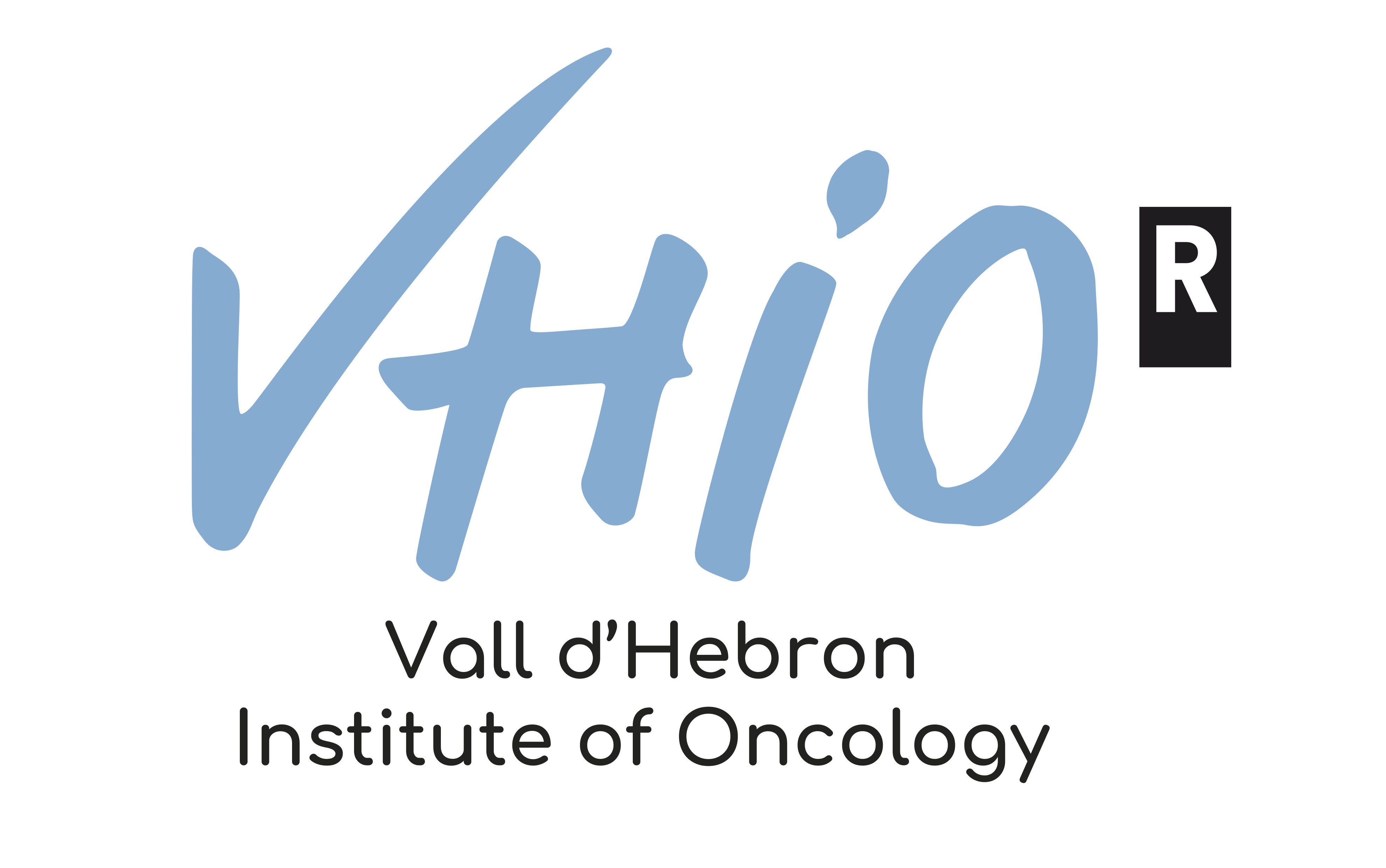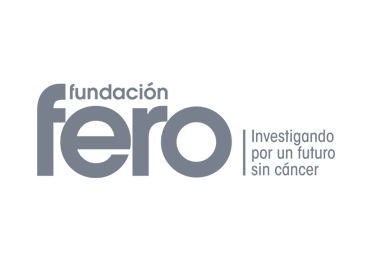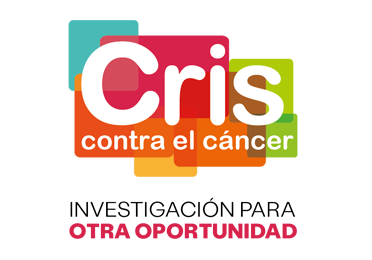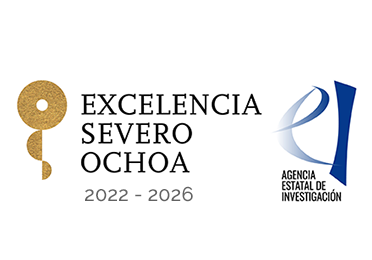VHIO launches the annual Master Internship Programme for excellent and motivated students that wish to do the Master Thesis @ VHIO. Apply now to boost your scientific career in a Translational Research Center of Excellence.
In this call, we do offer 6 internships for international life sciences Master students. Deadline 25th of November 2024
through our online application portal
Candidates should fulfil the following eligibility criteria at the time of the call deadline:
- Master students in Life Sciences or related subjects (e.g., Bioinformatics, Mathematics, Medicine, Biochemistry, Chemistry, Physics, Biostatistics,etc) with an excellent academic record and a strong commitment to scientific research
- Enrolled in the Master Programme of their choice. Candidates may not have received a master’s degree at the time of the Internship
- High level of English
- Availability to do a student placement/internship agreement through the correspondent University
Selected candidates will receive a monthly stipend of 650€ for five months during the first semester of 2024 ( Jan/Feb – Jun/Jul). The fellows will sign an agreement between the University and VHIO which will include insurance coverage.
All fellows will have access to an exceptional scientific environment, including outstanding equipment and facilities, together with a wide range of training opportunities, including access to seminars and some training workshops.
Interested candidates should apply via the VHIO online form including the following information:
- Personal and academic data, indicating the master in which the applicant is enrolled
- BSc certified academic record
- Letter of motivation, highlighting your interest towards a specific Masters project
- Brief summary of previous research experience (if any)
- Applicants should select up to two research groups/projects
Eligible applications will be assessed based on the information provided in the application form by an internal evaluation committee. Short-listed candidates might be invited for an interview with the group leader who has shown interest in the applicant.
- Call opening: 21 October 2024
- Call deadline: 25 November 2024
- Selection process: Early December 2024
- Incorporation: From February 2025
PROJECT DESCRIPTION
Systemic immune dynamics of patients treated with cancer immunotherapy | Alena Gros, PhD
The ability to monitor tumor-reactive CD8+ and CD4+ T cells in the blood has tremendous therapeutic potential, but it is more challenging due to their lower prevalence in circulation. The observation that immune checkpoint inhibitors induce the expansion of new TCR clonotypes in the tumor and this expansion is paralleled in the blood and correlates with clinical benefit demonstrates that the blood is an optimal minimally-invasive source to monitor tumor-specific T-cell responses. Numerous studies have conducted extensive profiling of peripheral blood response in patients treated with ICIs. However, these lack the ability to distinguish the tumor-specific clonotypes. In this project, we aim to leverage the use of multi-omics to track changes in the function and frequency of T cells following treatment with immunotherapy. On one hand, we will use high throughput immunological screens to detect tumor- and neoantigen-reactive T cells in the blood and will track their frequency and transcriptomic traits using TCRB deep sequencing coupled with single cell transcriptomics. Through this multi-omics approach we aim to better understand the T-cell dynamics following treatment and their implications for the clinical efficacy of immunotherapy.
Role of CIN in therapeutic adaptation to targeted agents in cancer | César Serrano, MD. PhD
Chromosome instability (CIN) entails and the presence of ongoing numeric and structural genomic rearrangements, and it is the most widespread feature in cancer cells. CIN, when present, has been linked to impaired outcomes and drug resistance in cancer patients. However, there is a lack of functional knowledge demonstrating how this actually occurs.
To address this question, and in the context of an ongoing multi-omic project studying CIN features in tumor evolution and progression, the student will participate in experimental work consisting on cellular-based assays with the aim of demonstrating whether targeted inhibition of key cancer drivers result in structural and numeric CIN as a survival response.
Tracing whole genome doubling during cancer progression | Francisco Barriga, PhD
Most cancer genomes undergo whole genome doubling (WGD), a phenomenon by which cells increase their genomic content. WGD that has been associated with disease progression and poor prognosis, yet the dynamics and biological traits of cells with WGD remain poorly understood. This project aims to develop a whole genome reporter system to identify, isolate, and manipulate cells with distinct genomic content as they naturally arise during disease progression.
Implementation of synthetic control arms in clinical trials| Guillermo Villacampa, PhD
Randomized controlled trials (RCTs) are the gold standard for establishing the efficacy of new cancer therapies. However, in the context of rare diseases, RCTs can be particularly challenging. Additionally, non-inferiority RCTs have certain limitations: (i) the requirement for a large sample size, (ii) arbitrary selection of the non-inferiority margin, and (iii) the unclear clinical interpretability of the results.
Considering this background, regulatory agencies are increasingly allowing the design of single-group trials that use well-defined synthetic control groups. However, the use of synthetic controls introduces statistical challenges.
This project aims to evaluate the development and implementation of synthetic controls. The objectives are:
- Explore the most effective methods to minimize potential bias in non-randomized comparisons.
- Use cancer databases to build and implement synthetic controls.
- Statistically quantify the accuracy of well-defined synthetic arms compared to standard RCTs.
Study of the Impact of the Tumor Microenvironment on Immunotherapy in Glioblastoma | Joan Seoane, PhD
Glioblastoma (GBM) is the most common brain cancer, and one of the most aggressive and devastating diseases. Novel therapies are desperately needed to improve the life of GBM patients. Some cancer patients respond to immunotherapy with robust and durable responses. However, GBM patients do not benefit from immunotherapies. It is suggested that the tumor microenvironment precludes the GBM response to immunotherapy but the molecular mechanisms involved in this phenomenon are poorly understood. Our project aims at studying the molecular mechanisms involved in the impact of the GBM tumor microenvironment on immunotherapy. Our studies will be performed with innovative patient-derived models that we have recently developed and that can recapitulate the complexity of the human GBM immune system. We also aim to characterize the cerebrospinal fluid of GBM patients to evaluate tumor immune cell landscape in a relatively non-invasive manner. Through our studies, we expect to identify novel therapeutic targets and biomarkers that could facilitate the response to immunotherapies and select the patients that may benefit from them.
VHIO’s Visual Omics (VVO): a pool of Shiny tools for visualizing omics data at VHIO | Lara Nonell, PhD
The field of omics research has experienced rapid growth in recent years, encompassing complex analyses of diverse data types including genomics and transcriptomics. Visualization plays a critical role in effectively communicating the results of such analysis. Researchers face the challenging task of selecting optimal visualization tools.
Traditionally, specific visualization tools have been associated with different omics data types. For instance, genomic variants are commonly presented as oncoplots, whereas transcriptomics data are often summarized in heatmaps. At VHIO, the bioinformatics unit supports basic and translational research. To empower non-programmer users, we plan to build a set of interactive applications for creating custom plots.
The main objective of this proposal is to explore R package Shiny and to create a web-based environment for VHIO research groups to interactively visualize omics datasets (VVO, VHIO’s Visual Omics). A key point in this development will be the connection to our computational cluster.
Assess the impact of MYC inhibition on DNA Damage Response (DDR) and its potential combination with PARP inhibition (PARPi) as a novel therapeutic strategy for multiple oncological indications | Laura Soucek, PhD
MYC transcriptionally stimulates several DDR genes, allowing cells to survive despite genomic instability. Importantly, DDR defects make cancer cells vulnerable to PARPi, which are used in BRCA1/2-deficient tumours lacking homologous recombination (HR).
Our preliminary data show that MYC inhibition by Omomyc (the best characterized MYC inhibitor known to date, developed by Dr. Soucek) can affect HR and DDR genes in TNBC.
This led us to demonstrate that the combination of Omomyc with PARPi could be an effective therapy not only in BRCA-mutated, but potentially in all TNBC tumours.
Here, we propose to study this novel combination in additional tumour types where PARPi are approved, such as Prostate, Ovarian and Pancreatic cancers, in both BRCA-mutated and wildtype backgrounds. Hence, the aim of this MSc project is to test the combination of Omomyc and PARPi in different cell lines and to further characterise its mechanism of action in these selected tumour types.
Redefining survivorship in childhood cancer through aging research | Mate Maus, PhD
Join us in pioneering research that applies aging science to improve the lives of children with cancer!
We are looking for a highly motivated Master’s student to contribute to a groundbreaking study investigating how cancer therapies accelerate aging and lead to late-effects in pediatric cancer survivors. By working with cutting-edge technologies from aging research and biomedicine, you’ll have the opportunity to make a real impact on the lives of children.
Learn to assess cellular senescence and biological age in cancer survivors using the latest techniques, including inflammaging panels, flow cytometry, histology, DNA methylation clocks, and magnetic resonance imaging. You will also gain experience in designing translational research studies and working with both patient and mouse samples.
Join our international team, where English is the primary language, and explore your creativity in a supportive lab environment.
Learn more about us and our work at: mauslab.org.
Elucidating the value of somatic copy number alteration patterns in lung cancer. | Ramon Amat, PhD
Somatic copy number alterations (SCNAs) play a pivotal role in solid tumors. Our laboratory has been investigating the value of SCNA burden as a biomarker of response to therapy in advanced lung cancer, particularly as a negative biomarker of response to immune checkpoint inhibitors (PMID: 35477861, 36852704). Leveraging our own large data set of sequenced lung tumors together with public repositories, we now aim to identify recurrent patterns of SCNAs and to study how these might impact the tumor microenvironment and how they might affect response to different types of therapy.
Defining good practices in AI-based cancer prediction tasks using radiological images | Raquel Pérez-López, MD. PhD
Cancer patients routinely undergo imaging, such as CT scans, which provide essential data for diagnosis and treatment. Machine Learning (ML) and Deep Learning (DL) models can extract more complex features from these images than the human eye, enabling tumor detection and outcome prediction. However, standardizing practices in preprocessing and model training remains a challenge, with no clear guidelines on necessary image transformations, data augmentation, or minimal dataset sizes for reliable results.This project aims to define best practices for training AI models in cancer prediction using radiological images, focusing on image preprocessing and dataset size. Specific objectives:
- Investigate whether preprocessing affects ML/DL model performance in the use cases of response prediction to immunotherapy (more than 800 labelled cases available) and liver cancer detection (more than 1000 labelled cases available).
- Determine the minimal and maximal dataset sizes for reliable prediction.
- Explore the impact of data augmentation techniques on models trained with small datasets.
This research will guide the development of robust, generalizable cancer prediction models by establishing clear standards for image preprocessing, dataset size, and augmentation practices.
Exploring the role of tumor microenvironment stiffness in immune evasion and immunotherapy resistance in cholangiocarcinoma | Tian Tian, MD. PhD
Cholangiocarcinoma (CCA) is a highly aggressive cancer with a poor prognosis and limited treatment options. Immunotherapy, particularly immune checkpoint inhibitors, has shown limited success in CCA, and the mechanisms underlying this resistance remain unclear. A defining feature of CCA is its desmoplastic microenvironment, which increases tissue stiffness. However, the contribution of this stiffness to immune evasion through mechanotransduction pathways is not well understood. This study investigates the expression of immune evasion markers in CCA cell lines and patient-derived organoids engineered to enhance T cell priming. We will also explore how substrate stiffness influences the expression of these markers. Additionally, co-culture experiments will assess the impact of stiffness on intercellular communication and the efficacy of immunotherapy. By shedding light on the role of mechanotransduction in CCA, this research aims to identify new therapeutic targets and improve immunotherapy outcomes.








